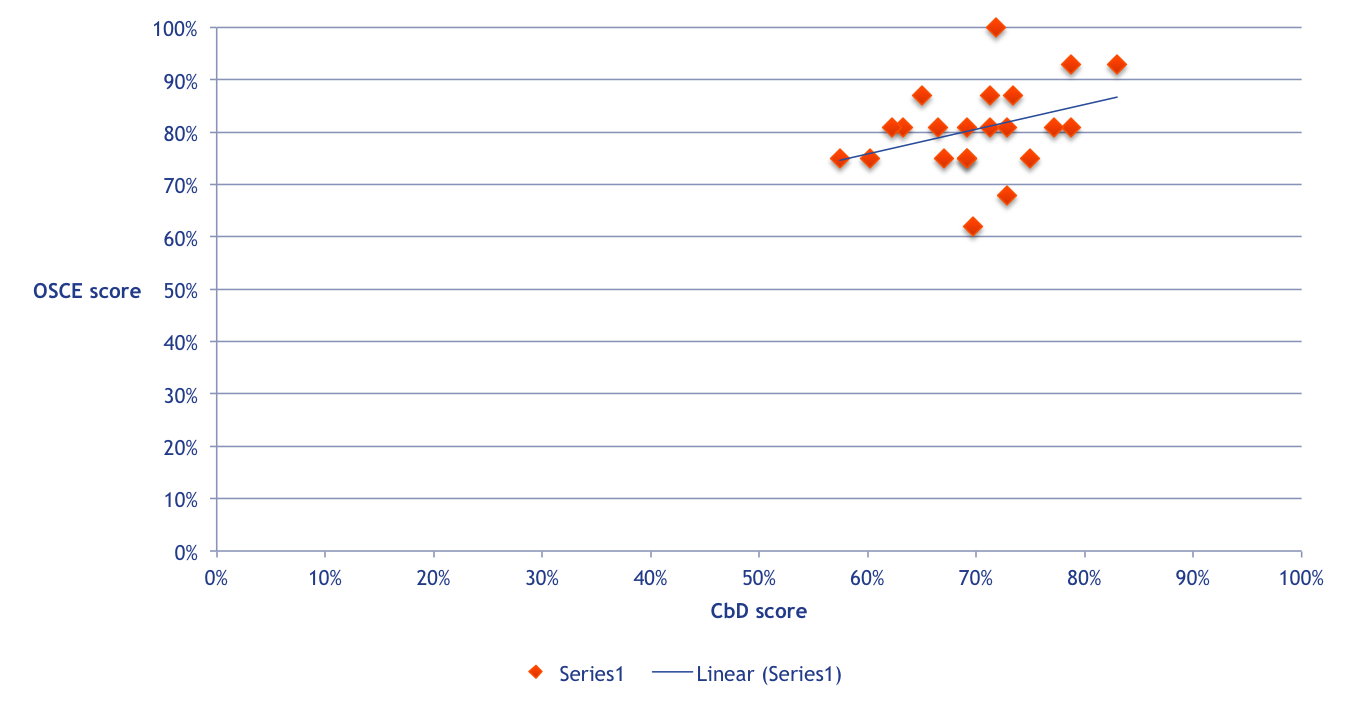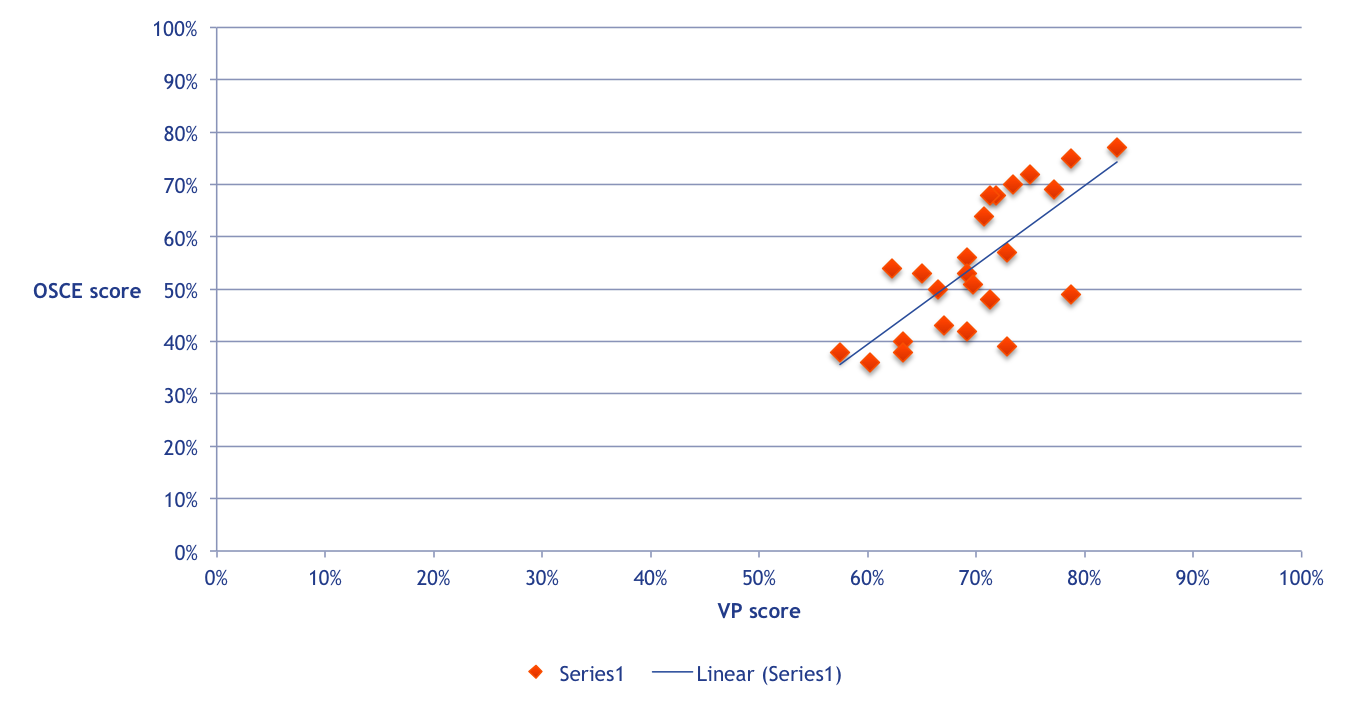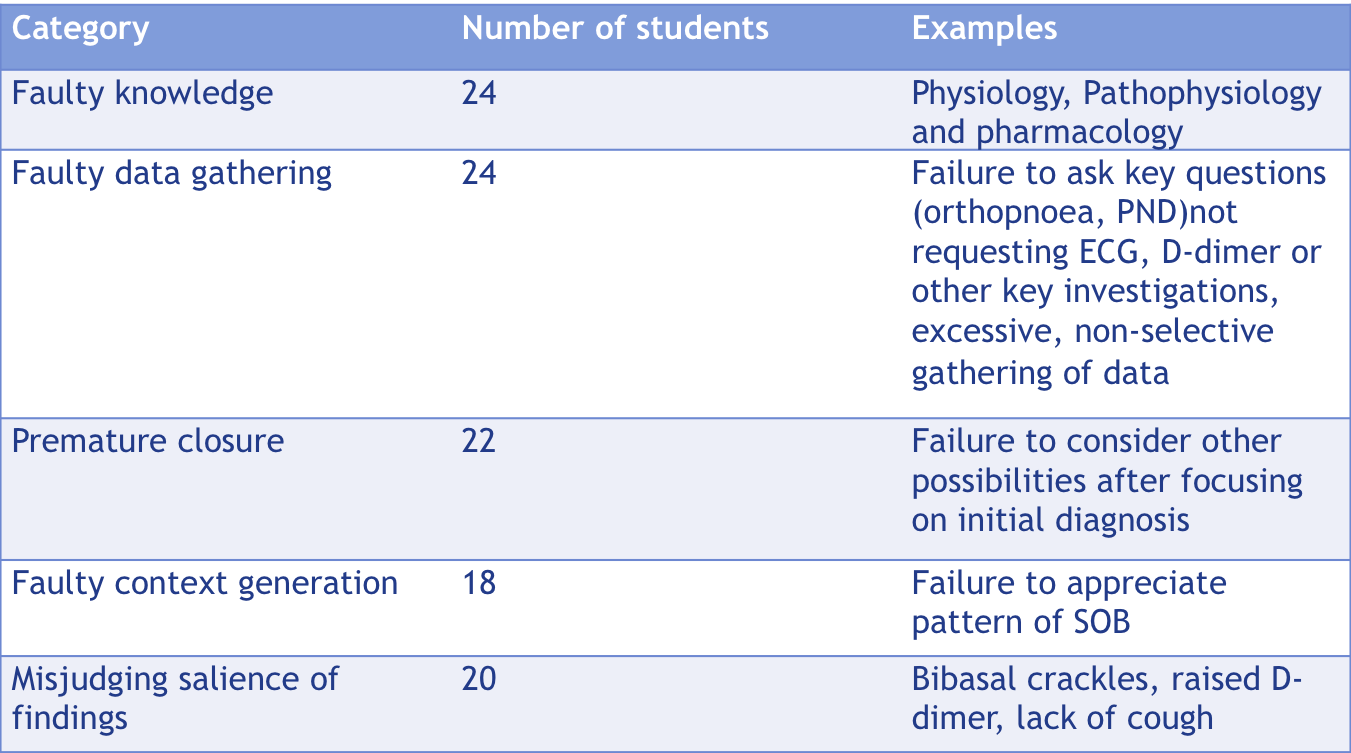



Theme
9II Virtual Patients/Social networking
INSTITUTION
University of Leicester - Medical and Social Care Education
University Hospitals of Leicester
Virtual patients (VPs) are an effective way of teaching clinical reasoning (1). Their efficacy for imporving clincial reasoning outcomes has been demonstarted (2). There are, however, very few examples of how VPs can be used to identify aspects of problem solving that students struggle with in practice.
QUESTIONS:
-What is the added value of VPs for providing feedback to students about their clinical reasoning ability in addition to work based asseseesments?
-What added value do VPs have for predicting future academic outcomes amongst students
•Senior clinical students rotating through the Acute Care Block (7 weeks)
•Emergency Medicine and Acute Medical Unit attachment
•All 31 students were invited to participate
•Students given access to Virtual Ward (www.le.ac.uk/badger)
•Work based assessments-case based discussions (CBDs) and observed VPs

START OF THE BLOCK→INTRODUCTION TO VIRTUAL WARD→VPs and CBDs→FEEDBACK→END of Block OSCE
•31 students invited, 24 participated
CBD score vs OSCE score

Pearson correlation score 0.3
VP score vs OSCE score
 Pearson correlation score 0.72
Pearson correlation score 0.72
Clinical reasoning shortcomings identified during VPs (3)

Students' feedback:
•‘Helpful for consolidation knowledge and clinical problem solving”
•‘Great opportunity to discuss reasoning behind asking certain questions or ordering certain investigations’
•‘Feedback obtained after a VP was useful and guided further learning’
•‘Very useful in view of upcoming assessment’
•Strong correlation between VP performance and end of block OSCE outcome
•Stimulating learning experience for students
•Unique opportunity for clinical teachers to witness students’ reasoning process and feedback on it
•More personalised, specific feedback for students allowing real-time remediation when necessary
1. Cook, D.A., Triola, M,M. Virtual patients: a critical literature review and proposed next steps, Medical Education 2009: 43: 303–311
2. Cook, D.A. Erwin, PJ. Triola, M.M. Computerized Virtual Patients in Health Professions Education: A Systematic Review and Meta-Analysis. Academic Medicine 2010;85:1589-1602
3. Graber M, Franklin N, Gordon R, Diagnostic Error in Internal Medicine, Arch Intern Med. 2005; 165:1473-1499
 Send Email
Send Email